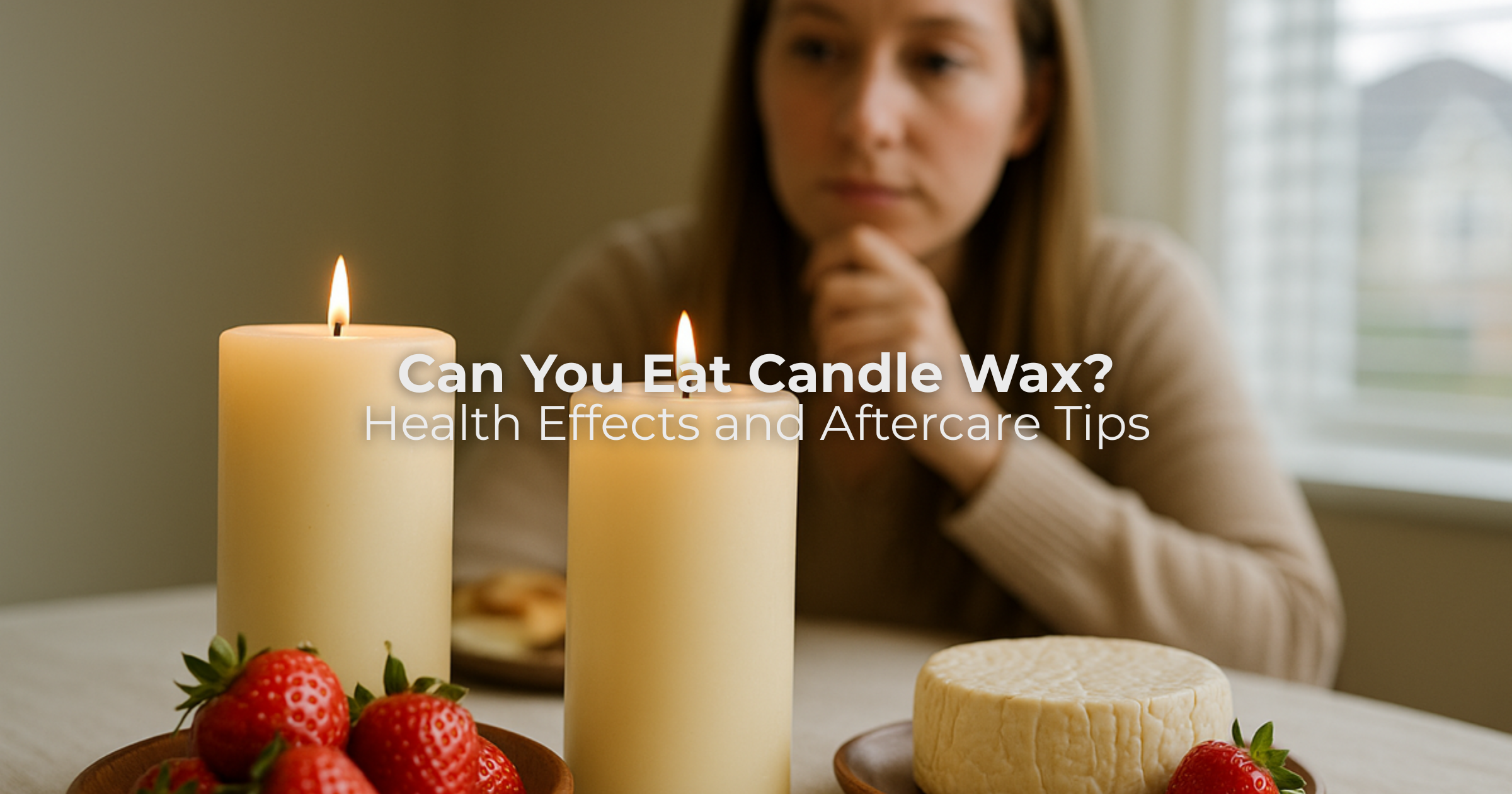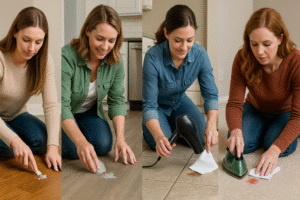No products in the cart.
Can You Eat Candle Wax? Health Effects and Aftercare Tips

After years in candle crafting, I’ve learned that wax often confuses people. Many see it on fruits, cheese, or candles and wonder, “Can you eat wax?” It looks clean, smooth, and harmless, but its chemistry tells another story.
My insights come from firsthand experience working with different waxes and understanding how they behave beyond the candle mold.
This blog clears up the confusion with accurate, practical answers. You’ll learn if wax is edible, what happens when it’s swallowed, and what to do if it ever happens.
Can You Eat Wax?
No, you shouldn’t eat wax. It’s non-digestible and metabolically inert, meaning your body cannot break it down or absorb it. Wax is made of hydrophobic hydrocarbons that resist enzymatic breakdown in the digestive tract, so it passes through the body unchanged.
Some natural waxes, such as beeswax, carnauba, and palm, appear in foods or pharmaceuticals as glazing agents or capsule coatings under food-grade approval (E901, E903). They’re safe only in microscopic layers, like fruit coatings or cheese rinds, and not meant to be eaten directly.
By contrast, paraffin, soy, and microcrystalline wax, often used in candles, may contain stearic acid, dyes, or fragrance oils that can irritate the gastrointestinal system. Their solid structure and source-dependent toxicity make them unsuitable for consumption.
Even though some waxes are non-toxic, all are biologically indigestible. They add no nutrition and can cause discomfort if swallowed. In candle making, their strength lies in melting, molding, and protecting, not nourishing.
What Happens If You Eat Candle Wax?
When swallowed, wax acts as a foreign, non-biodegradable compound inside the body.
It doesn’t dissolve or digest, and the outcome depends on how much and what kind.
1. Wax cannot Be Digested
Human enzymes can’t break down wax’s hydrocarbon chains. It remains intact, moving through the intestines without absorption.
Minor ingestion may only cause mild stomach unease or greasy stool, similar to swallowing a bit of petroleum jelly. The body recognizes it as waste and expels it naturally.
However, eating larger amounts or synthetic wax can slow digestion or cause temporary irritation.
These materials resist acids and moisture, so the digestive system struggles to move them along smoothly.
2. Risk of Intestinal Blockage
Wax hardens after cooling, which can create a mechanical obstruction in the stomach or intestines.
It may trap other food, causing bloating, constipation, or abdominal pain. Children and older adults are more prone to this.
I once heard from another candle maker whose child swallowed a wax bead; it didn’t digest it simply passed after several days.
Even though it was non-toxic, the incident proved wax’s physical incompatibility with digestion.
3. Toxic Additives and Impurities
Candle wax isn’t pure. Additives like fragrances, stearic acid, and dyes improve burn quality but make it unsafe to ingest.
Some petroleum-based waxes contain hydrocarbons such as toluene or benzene traces, which can irritate the stomach in higher amounts.
Certain cosmetic or crayon waxes include color pigments and binders not approved for food contact. They’re not immediately dangerous but can cause nausea or mild allergic reactions if swallowed.
By contrast, food-grade waxes, those used for fruit coatings or candies, are purified and regulated for trace use. They differ entirely from decorative wax, which should never be consumed.
4. Choking Hazard
Wax’s slick, solid texture makes it a choking risk, especially for children. Once inside the throat or esophagus, hardened wax can block airflow.
Candles with decorative particles or metal wicks raise that danger further.
If choking occurs, don’t induce vomiting. Seek immediate medical attention. Even if breathing seems normal later, fragments may still irritate the airway.
In any case, wax is not food and should be handled carefully around children or pets.
How to Get Back If You Eat Candle Wax?
If you accidentally swallow wax, stay calm. It usually passes through the digestive system naturally.
Drink water to help movement and choose light, fiber-rich foods like fruit or oats to ease bowel flow. Avoid heavy meals that slow digestion.
If you feel nausea, discomfort, or pain, contact a doctor or Poison Control. Mention if the wax contained dyes or petroleum elements, as these can occasionally irritate the stomach.
Never try to vomit this increases choking risk.
For children who ingest wax, monitor them closely but stay composed. Most materials are non-toxic, yet they remain indigestible and exit unchanged.
Final Thoughts
Wax might look harmless, but it’s not food. While some natural waxes are safe for limited use in food coatings, none are digestible.
Swallowing wax can lead to mild irritation, discomfort, or blockage, depending on the amount and type.
The best rule is simple: wax belongs on candles and coatings, not on your plate. If you accidentally eat a small piece, stay calm, drink water, and allow it to pass naturally.
For those who love candles, focus on enjoying their beauty and craftsmanship instead of worrying about edibility.
I recommend exploring Karigar Style for soy candles, clean burning, and purity, created for light and ambiance, not consumption.
Frequently Asked Questions
Is candle wax edible?
No. Candle wax isn’t made for eating. It contains paraffin or soy compounds designed for burning, not for digestion.
How much wax can I eat?
Even small pieces aren’t recommended. While not usually toxic, wax is indigestible and may cause mild stomach issues.
Does wax break down in the stomach?
No. Wax resists both stomach acid and enzymatic action, passing through the digestive system unchanged.

Nav Preet is the founder and creative soul behind Karigar Candles. Inspired by heritage, nature, and the warmth of handmade artistry, she crafts candles that do more than glow—they evoke emotion. Through this blog, she shares her love for scents, styling, and mindful living, one flame at a time.
Creative Head at Karigar Style







